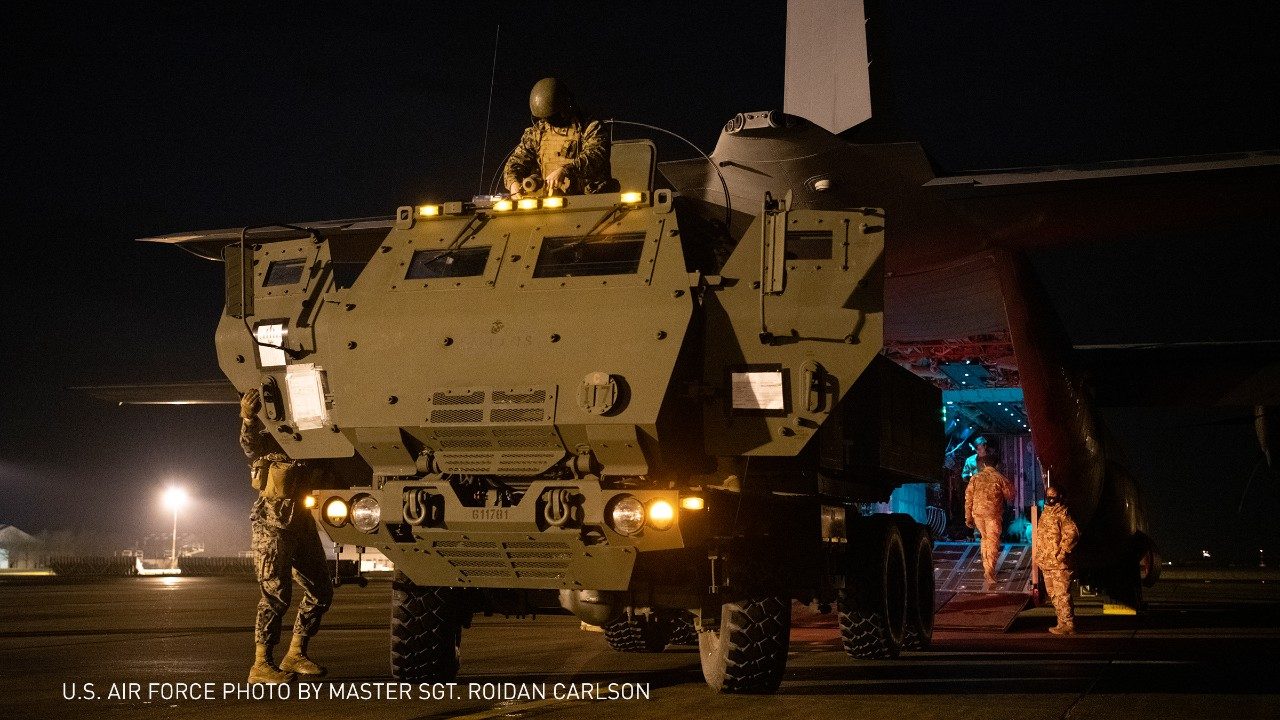Wings and Rockets: C-130J and HIMARS Redefine Rapid Strike Capability
In an era where speed, flexibility and surprise define modern warfare, two partners have emerged as a force-multiplying duo: the Lockheed Martin C-130J Super Hercules and the High Mobility Artillery Rocket System (HIMARS). Together, they form a high-impact, quick-response strike capability that offers commanders a rare mix of agility and firepower. The tactical airlifter and the wheeled rocket launcher’s combined capabilities are transforming how countries think about deep fires and battlefield mobility.
This is what Lockheed Martin calls Mission Integration—connecting 21st Century Security® strategy with systems that drive innovation with the mission in mind. It ensures defense tech developments are built to deliver outcomes to keep people safe.
The C-130 Hercules is the rugged workhorse of the sky, capable of landing on austere, short runways and quickly unloading or loading cargo under pressure. HIMARS is a precision-guided rocket artillery system that can deliver devastating firepower—up to six GMLRS rockets, two PrSMs or a single ATACMS missile—at targets between 70 and 400+ kilometers away.
Speed, surprise and survivability are what makes the two partners so effective when working in tandem. Because HIMARS is light enough to fit inside the cargo bay of a C-130, the aircraft can insert the rocket system into forward locations, even in denied or contested airspace, execute a rapid offload and redeploy the system within minutes. The HIMARS can then "shoot and scoot" to fire on strategic targets like command nodes, supply hubs or air defenses, before the enemy can respond.
In some cases, the C-130 doesn’t even shut down on the ground. It performs a combat offload, rapidly offloading the HIMARS onto the tarmac as it rolls to a stop and quickly departs. This maneuver, known informally as a HIMARS Rapid Infiltration, has evolved into a signature tactic. It gives ground forces long-range strike options without the need for a fixed, vulnerable base.
The C-130 and HIMARS combination has been successfully tested in various multinational exercises, such as Swift Response 25, demonstrating its ability to rapidly deploy and provide long-range artillery capabilities in strategic locations. These exercises showcase the system's value in reinforcing NATO's eastern flank and highlight the importance of partner integration and interoperability. By participating in these exercises, the U.S. and its allies can ensure their readiness to respond to emerging threats and maintain a strong deterrent presence in the region.

Military personnel prepare to on-load a HIMARS into an MC-130J Commando II in Germany during a low-visibility, night training HIMARS Rapid Aerial Insertion (HIRAIN) mission. Special operation’s capabilities enhance mission execution, extend the reach of long-range, precision strike capabilities and enable the joint force. Image: Courtesy of DIVDS.
In regions where basing rights are politically sensitive or where infrastructure is limited, the C-130 and HIMARS combo offers a low-profile, high-lethality presence. It’s a particularly valuable tactic in the Indo-Pacific, where the vast geography and dispersed nature of potential conflict zones demand mobile, self-contained strike packages. In Europe, NATO’s agile deterrence posture is supported by enabling forces to respond quickly to threats across different flanks without waiting for slower convoys or fixed batteries.
As new variants of long-range precision fires are integrated into HIMARS, including hypersonic capabilities, and as C-130 upgrades improve range and survivability, this partnership is likely to grow even more lethal. Other nations are taking note, adopting similar playbooks in Europe and Asia. What started as a clever logistical pairing is now a template for distributed, expeditionary warfare—one that gives U.S. and allied forces an edge in contested environments.




